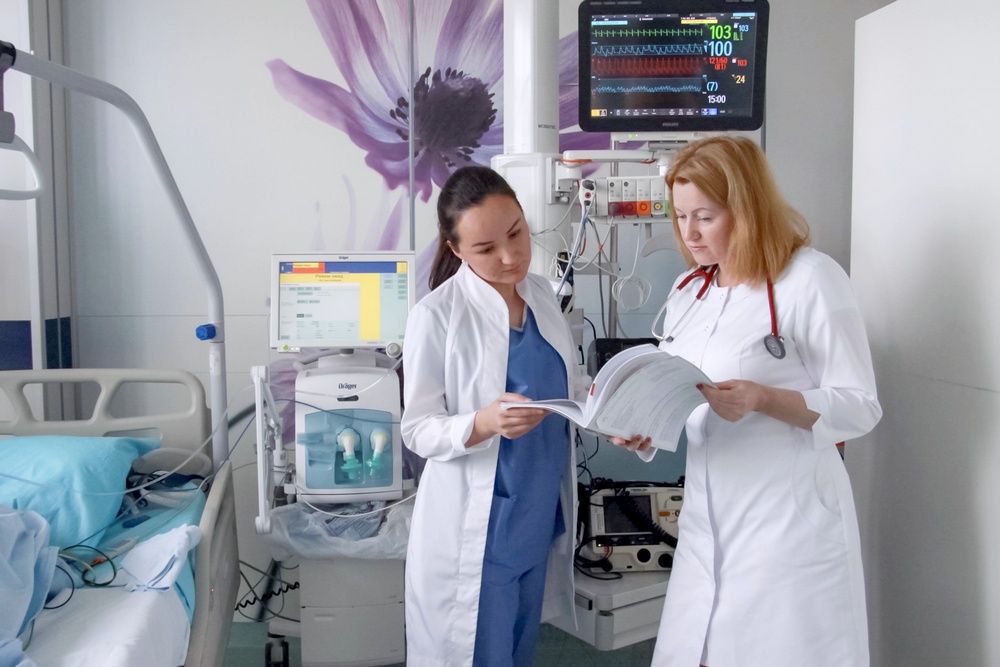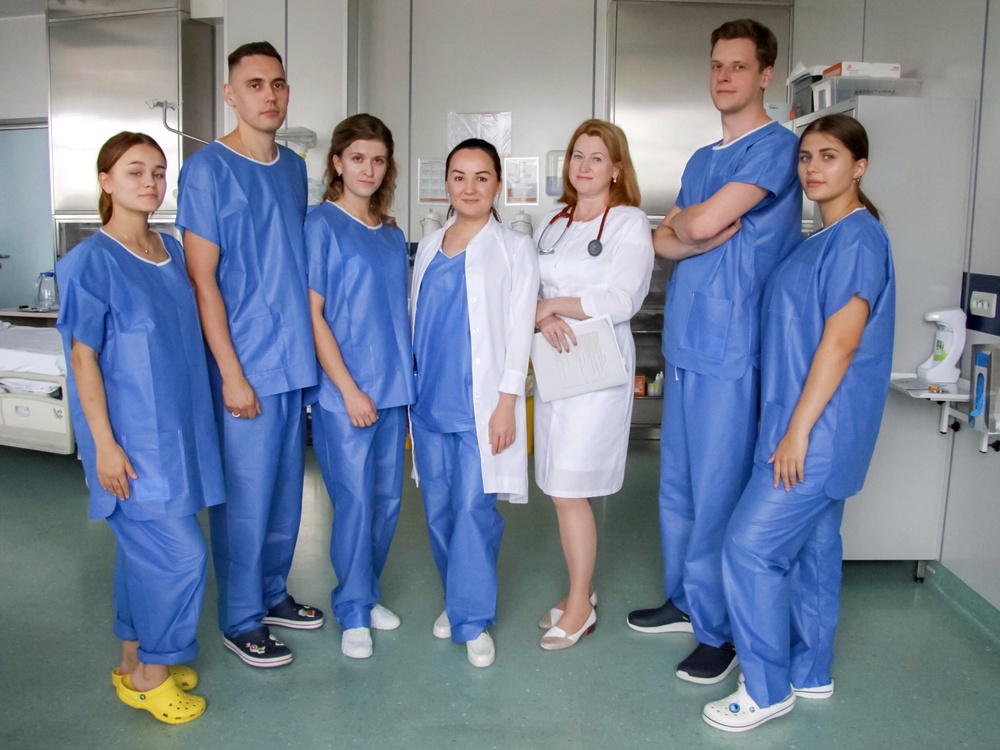
In January 2018, a 69-year-old patient was transferred from the city hospital to Anesthesiology and Critical Care Department No. 8 of Almazov Centre. In 2011, he was diagnosed with a permanent atrial fibrillation and in 2013 he developed a severe tachycardia, which could not be controlled. Heart contractility decreased more and more each year and heart failure symptoms began to deteriorate.
The patient was admitted to Almazov Centre in an extremely severe condition. He experienced shortness of breath with minimal physical exertion and even at rest and had a severe tachycardia caused by atrial fibrillation. ECG showed a critical decrease in cardiac contractility, which was about 1/5 of the normal value (ejection fraction was 12%, the normal value being above 55%), expanded heart chambers and severe mitral and tricuspid valve insufficiency. Contrast-enhanced chest CT revealed pulmonary embolism.
The patient was initially admitted to Anesthesiology and Critical Care Department No. 8 but in a few days after the drug therapy was selected, he was transferred to Cardiology Department No. 8.

Team of Anesthesiology and Critical Care Department No. 8 and Cardiology Department No. 8
Choosing the therapy was complicate by ventricular arrhythmias, low blood pressure and severe mitral regurgitation, which did not allow to immediately prescribe targeted doses of drugs. The patient's condition remained severe for a long time, he tolerated only tiny doses of drugs, and they could be increased very slowly. Given the severity of the patient's condition at the time of hospitalization, he was considered a potential candidate for heart transplantation.
“When we start treating a difficult patient, we can never tell for sure whether they will get better or, on the contrary, the disease will progress rapidly. Therefore, we try to start examining such patients to be put on the waiting list for heart transplantation, so that in case of deterioration of their condition they would be ready for this, and no time will be lost,” explained Maria Bortsova, Chief of Cardiology Department No. 8.
After 1 month of treatment, the patient showed a normal heart rate, improved heart contractility (ejection fraction increased from 12% to 20%), decreased heart failure, he could leave his room, move independently within the department. After that, he was discharged for outpatient treatment and medical therapy was continued and corrected by Victoria Galenko, specialist from the Heart Failure Research Department.
For 3 years now, the patient has been living a full life, returned to work and practically does not feel any restrictions. ECG results in 2021 showed an increase in ejection fraction of up to 47%.

Patient
Of course, medical therapy alone cannot always result in such improvement. This is possible only when there are reversible factors of heart damage and restoration reserves of the heart muscle. It is very important not to miss the moment when all the possibilities of medical treatment have been exhausted and only surgical methods including heart transplantation could help. Nevertheless, such cases are not rare and the struggle for one’s heart is critical.
A whole team of doctors was involved in the treatment of the patient: Head of the Heart Failure Research Department Prof. Maria Sitnikova; Chief of Cardiology Department No. 8 Maria Bortsova; Chief of Anesthesiology and Critical Care Department No. 8 Indira Orazmagomedova; cardiologist Victoria Galenko.
